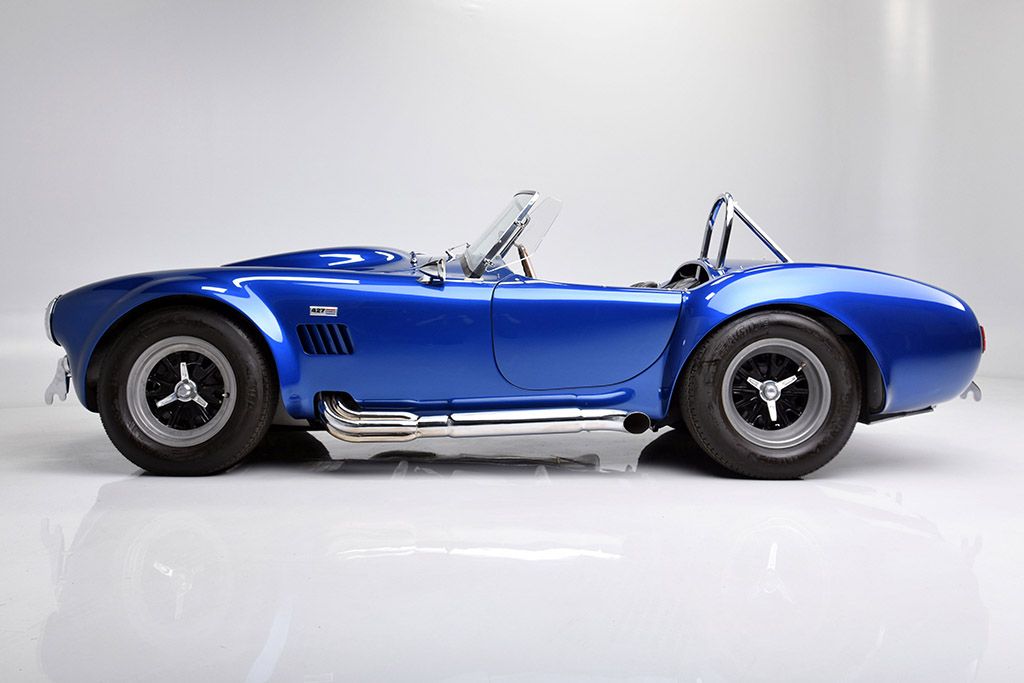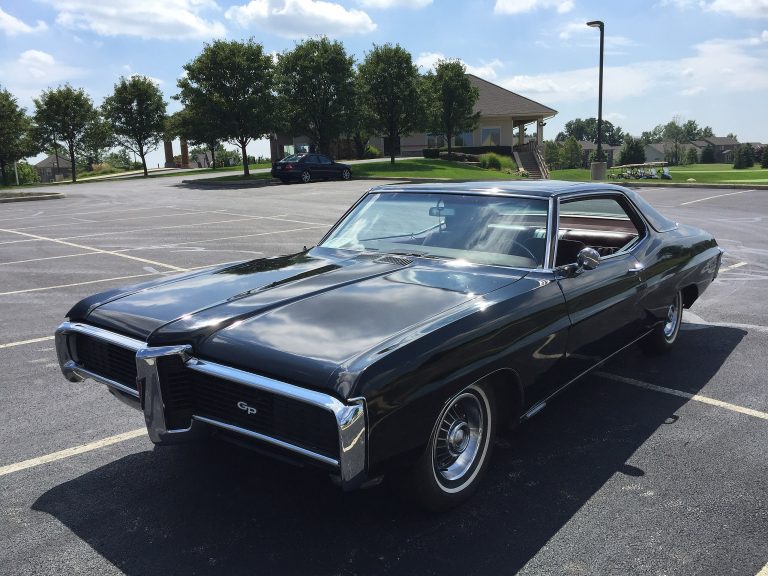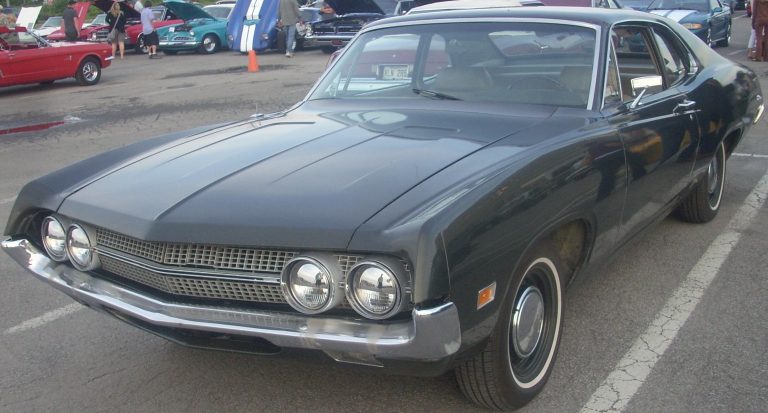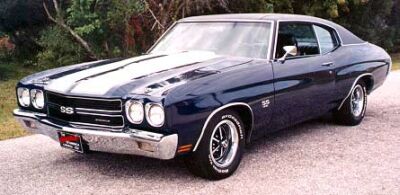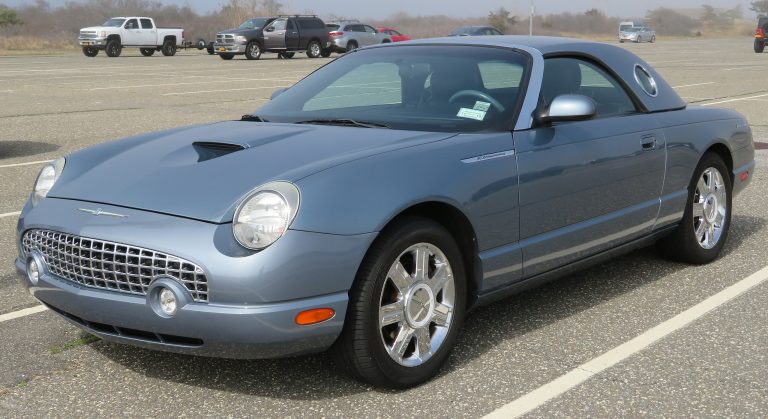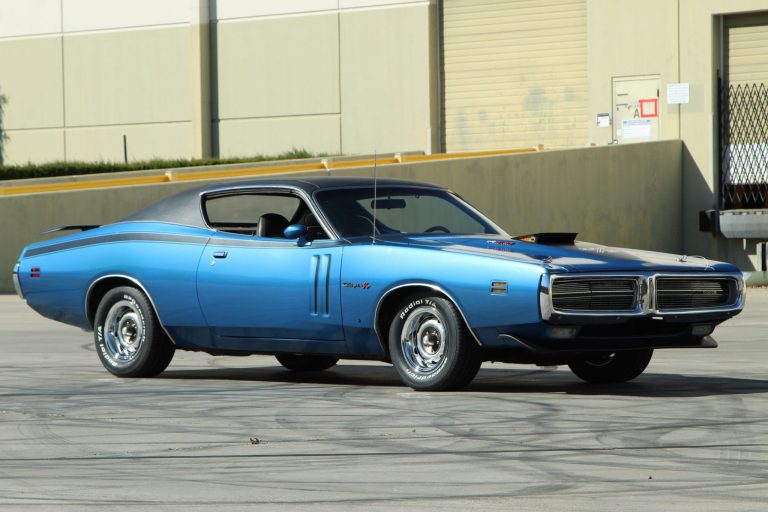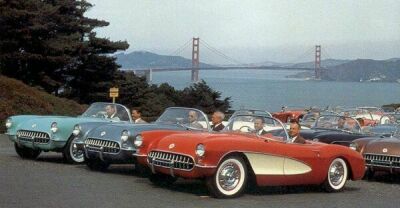What Are The Most Expensive Muscle Cars?

Meet Austin
Austin has been a muscle car enthusiast since an early age with his Dad having a collection including a 1965 Mustang, 1968 Mercury Cougar, and a 1969 Mustang Mach 1 among many others. Austin received a technical writing degree from University of Colorado Denver with the intentions of becoming an automotive journalist. His automotive knowledge, enthusiasm, and hands on experience allow him to craft detailed, accurate, and high-quality articles for the passionate Muscle Car Club audience.
Typically, when you think of expensive cars, what comes to mind? A Ferrari 250 GTO, Bugatti Chiron, or McLaren F1 perhaps? European sports cars have topped auction sales figures for decades, but that has changed in recent years. As more time passes between the hay day of the classic muscle car and now, prices are beginning to skyrocket. Whether it’s nostalgia or respect for the unparalleled performance of the day, muscle cars are now a hot commodity. The funny thing is that high auction prices are completely counterintuitive to the muscle car mantra.
Low price was one of the pillars of the muscle car movement in the late 1950s and 1960s. Back in the day, cars like the Chevy Nova, Pontiac GTO, and Plymouth Barracuda were all attainable with a middle-class salary. Muscle cars proved that insane performance didn’t have to come at a premium. As such, talking about the most expensive muscle cars is seemingly counterintuitive. But, as clean examples of the classics begin to get harder to find, the prices also increase, sometimes astronomically.
In this article, we’ll take a look at some of the legends from the 1960s and 1970s that are fetching multiple times their original MSRP value today.
What Determines a Muscle Car’s Value?
When it comes to modern muscle car pricing, rarity, condition, and history all play a major part in how much they fetch at auction.
Rarity is important due to the fact that rarity and exclusivity go hand in hand; every collector wants to own a crown jewel. The vast majority of the muscle cars on this list, including the Corvette L88, Shelby Cobra 427 Super Snake, and 1971 ‘Cuda Convertible, are all valuable do to the fact that they are exceedingly rare. For example, only two manual 1971 ‘Cuda Convertibles are said to exist, making the supply much smaller than the demand. That is, in essence, the reason that the majority of classic muscle cars are worth so much.
Condition is obviously a massive part of the equation as well. While there are some muscle cars out there that are so rare and sought after that they are extremely valuable regardless of condition, low mileage, unrestored, immaculately maintained muscle cars are always going to fetch a prettier penny than on that has been neglected or heavily modified. Mileage fits into this conversation too, as lower mileage cars are always desired more than high mileage cars.
A muscle car’s historical significance can be one of the ultimate determining factors of price. Oftentimes, collectors want a muscle car that has been part of something significant in automotive history. A perfect example of this is Carroll Shelby’s 427 Super Snake. While the Super Snake’s performance, rarity, and cool factor unquestionably play a massive part in the car’s value, the fact that it was owned by one of the most legendary figures in automotive history makes it irreplaceable and therefore one of the most expensive muscle cars.
Most Expensive Muscle Cars: 1969 Chevrolet COPO Camaro ZL1 – $1,094,500
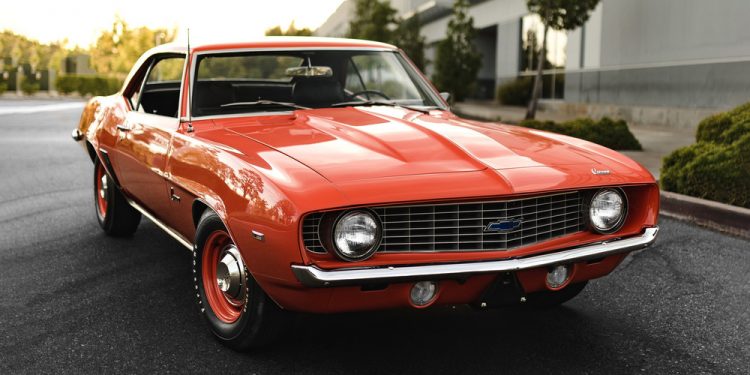
One of the primary reasons that the 1969 COPO Camaro ZL1 is such a big-ticket item is its rarity. With only 69 ZL1 COPO Camaros ever built, they are often regarded as true unicorns of the muscle car era and one of the most expensive muscle cars out there. In addition to being rare, the 1969 Camaro ZL1 had not only the performance to justify its worth, but also the history to back up its collectible status.
The COPO program was started in 1968 with Fred Gibb, the notorious Chevy tuner and racing aficionado. Gibb ordered fifty L78 Novas with M40 Turbo Hydra-Matic transmissions. That was an option that wasn’t available off of a standard Chevrolet order form. Around the same time, the Federal Government began cracking down heavily on manufacturers building rocketships for the streets with little regard for the safety of the pilots. As a result, displacement and power-to-weight regulations were mandated, barring companies like Chevy from going too crazy.
However, those mandates only truly affected production cars, which is where COPO entered the picture. COPO stands for Central Office Production Order which Chevy used as a loophole to their problem. Customers who wanted an outrageous Chevy with an engine far bigger than it needed could special order a car through the COPO program. The most commonly ordered models included L72 Camaros and Chevelles and all-alluminum ZL1 Camaros and Corvettes. The big block 427-cubic-inch ZL1 was rated at 435 horsepower but, in reality, produced closer to 500 horsepower. It was capable of 0-60mph in 3.8 seconds and the quarter mile in less than 11 seconds. All of these factors culminate into one of the rarest and most expensive muscle cars of the 1960s and for a good reason. The $1,094,500 auction price reflects that.
Most Expensive Muscle Cars: 1969 Pontiac Firebird Trans Am Convertible – $1.2 Million
The Pontiac Trans Am is another one of those cars that is imprinted in every muscle car enthusiast’s brain. Before the introduction of the Trans Am, the Pontiac Firebird had already firmly established its place in the American pony car meta. The Firebird was initially released by General Motors in 1967, shortly after GM released the Camaro the same year. Both the Chevy Camaro and Pontiac Firebird were meant to eat into Mustang sales which they unquestionably did.
1969 was the final year of the first-generation Pontiac Firebird. It was also the first year that the Trans Am package was offered on the Pontiac Firebird. It was an expensive package, at $1,200 in 1969, which limited production numbers to just 697 total for 1969. Of that 697 production figure, only 8 were ever built as a convertible. Pontiac existed as the middle premier marque in the GM hierarchy above Chevrolet. As such John DeLorean wanted the 1969 model to blow the Camaro out of the water. In terms of performance, it was certainly brawling with the best.
Initially, the Firebird Trans Am was slated to have an inline-6 engine. That idea was soon vetoed in favor of the 400 H.O. The 1969 Pontiac Firebird Trans Am utilized the 400 Ram Air III V8 engine which produced 335 horsepower. In terms of performance, the Firebird Trans Am could hit 60 from a standstill in 4.6 seconds. The Trans Am’s Ram Air V8 power combined with its rarity and good looks makes the 1969 Firebird Trans Am convertible one of the most sought-after and expensive muscle cars ever made.
1967 Chevy Corvette L88 Coupe – $3.85 Million

The Chevy L88 Corvette is perhaps the most sought-after Corvette of all time. Like the COPO Camaro, the L88 Corvette is an extreme rarity, with only 20 examples produced in 1967.
The real star of the show was the 7.0L Chevy L88 engine, which was only ever used in the L88 Corvette. The L88 427 engine was a special project by Zora Arkus-Duntov who aimed to create a no-compromise racing engine for the Vette. The L88 Chevy V8 engine featured high-performance alluminum 427 cylinder heads, a ridiculous high-performance cam, a forged rotating assembly, 850-cfm Holley carburetor, and many more significant upgrades. To this day, the L88 V8 is one of the most powerful engines to rest under the hood of a Corvette.
The way that Chevy went about introducing the L88 to showrooms was also strange. Due to the fact that they didn’t want just anyone to walk into a dealer and buy one, they didn’t market the L88 Corvette at all. Additionally, they rated the L88 option at a lower horsepower figure than the less powerful L71 engine. As a result, only Chevy customers that were in the know purchased the 7.0L V8 L88-powered Corvette, which turned out to be race teams primarily.
Zora Arkus-Duntov intended the L88 Corvette to be race ready straight from the showroom floor. As a result, it had performance suspension, a beefed-up transmission, and its A/C deleted among other things. The L88 Corvette went on to compete in Le Mans and the 24 Hours of Daytona. At this point, it is said that only around 10 of the 20 1967 L88 Corvettes still exist with even fewer retaining the factory L88 engine.
1966 Shelby Cobra 427 “Super Snake” – $5,115,000
It is no secret that any car wearing the Shelby badge is worth a fair bit of money. That statement is especially true for Shelby Cobras. We’re beginning to sound like a bit of a broken record at this point. But, one of the biggest reasons for the Shelby Cobra’s astronomical price is rarity. Only 1,000 Shelby Cobras were built in total between 1962 and 1967. Over the years, the Shelby Cobra was powered by Ford 260, Ford 289, Ford 427, and Ford 428 V8 engines. While all of them were special in their own way, the 427 was ultimately the king cobra.
In the Cobra world, the Shelby Cobra 427 Super Snake is unparalleled in terms of value and rarity. To put it in perspective, only two were ever built. One of the two no longer exists. The other was owned by Carroll Shelby himself. It doesn’t get much more exclusive than that. Mr. Shelby deemed the 427 Super Snake the “Cobra to end all Cobras” due to its ludicrous performance. Shelby’s Super Snake started out as one of only 23 427 Competition Roadsters and was eventually converted to a Super Snake in 1966.
Unlike a regular 427 Cobra, the 427 Cobra Super Snake featured not one, but two Paxton superchargers under the massive scooped hood. The final power figure for the Super Snake Cobra was 800 horsepower. Yes, you read that right, 800 horsepower in a car weighing 2,550 pounds. As a result, it was good for 0-60 in 3 seconds. Shelby’s Cobra Super Snake has changed hands numerous times over the years. Most recently, it sold for $5.5 million making it one of the world’s most expensive muscle cars. With the performance and pedigree behind the Super Snake, it isn’t hard to see why.
1971 Hemi ‘Cuda Convertible – $3,500,000
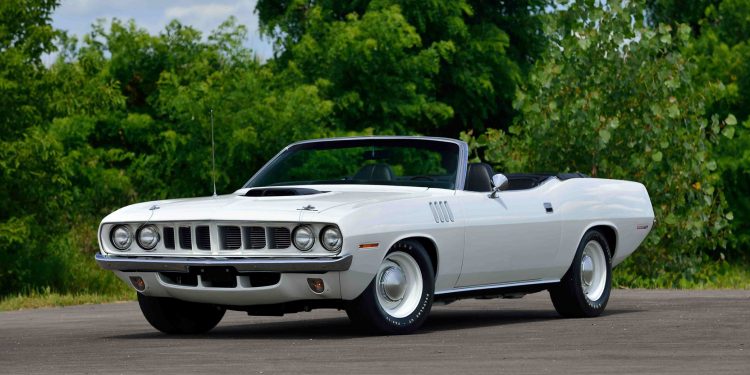
The Plymouth Barracuda is one of the poster cars for the entire muscle car era. By 1971, the muscle car era was nearing its end. To follow up the blow of the US Federal Government passing the Clean Air Act in 1970, the 1973 oil crisis resulted in fuel rationing and higher gas prices which was obviously an issue for thirsty V8 muscle cars.
The Plymouth Barracuda is widely considered one of the last of its breed. For that reason, it occupies a special place in many enthusiasts’ hearts. The first two generations of the Plymouth Barracuda are often overshadowed by their competition. The Ford Mustang outsold and outperformed the first and second-generation Cuda. It is the third-generation Hemi Cuda that people remember and love. Its mean-looking split grille design, massive hood scoops, and aggressive proportions epitomized the American muscle car. The Hemi Cuda was offered as a coupe and a convertible. The latter is the rarer and more sought-after model.
The top-of-the-line 1971 Hemi Cuda model made use of a 426 Hemi V8 producing 425 horsepower and 490 lb-ft of torque. While it wasn’t the most powerful muscle car on the block, the Hemi Cuda could do more than run in a straight line. The 7.0L Hemi Cuda featured chassis modifications and upgraded suspension which helped translate power to the pavement. The vast majority of the 374 Hemi Cuda convertibles received a TorqueFlite 727 automatic transmission. However, there were three examples built with a four-speed manual transmission. It is said that there are only 2 manual Cuda four-speeds stateside. That makes them one of the rarest and most expensive muscle cars in existence.
Most Expensive Muscle Cars Conclusions
The muscle car era was one of the best times in American motoring history. With so many manufacturers competing for on-street supremacy, they kept getting better and better until their ultimate demise in the early 1970s. While the American muscle car was initially meant to be an affordable way to have Ferrari levels of power, the rarity, history, and cool factor of many muscle cars have made them almost unobtainable today.
Some cars are exceedingly valuable because of their rarity. Classic muscle cars like the 1969 COPO Camaro and the 1971 Hemi ‘Cuda convertible garner massive auction prices due to the fact that there are barely any surviving examples today. Condition also plays a massive role in muscle car pricing. While the Chevy Corvette L88 is a very rare car, examples with all of their original components sell for much more than molested or modified examples.
Finally, the historical significance of a given muscle car also plays a massive role in terms of price. Due to the fact that the 1960s and 1970s were such an iconic time for American muscle cars, vehicles that played a significant role in the formation of that mythos are highly sought after and highly valued. Carroll Shelby’s 1966 Cobra 427 Super Snake is a great example of all of the valuable attributes listed above. It was one of two cars ever built, it remained in original condition, and Carroll Shelby himself owned it.
Of course, there are other factors that go into determining the price of classic muscle cars. One thing is for sure, you’ll need a pretty penny to be able to purchase the creme of the crop.
If you enjoyed this article and are looking for more muscle car content, check out our What Was The First Muscle Car? article!

